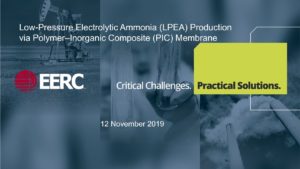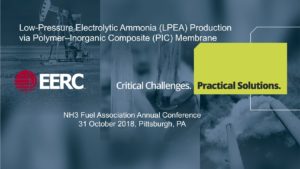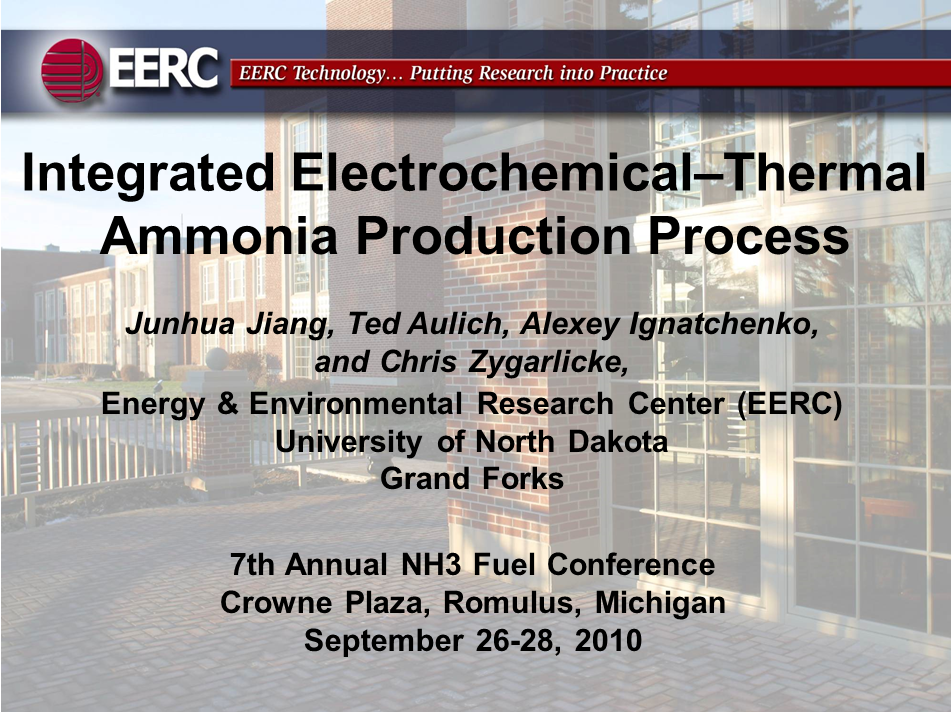Presentation
300°C Proton-Exchange Membrane for Low-Pressure Electrolytic Ammonia Synthesis
The two North Dakota universities and Proton OnSite are developing a 300°C-capable polymer–inorganic composite (PIC) proton exchange membrane for low-pressure (15-psi) ammonia synthesis. The PIC membrane comprises an inorganic proton conductor strategically composited within a high-temperature polymer to enable a proton conductivity of 10-2 siemens/centimeter at 300°C. Integrated with appropriate low-cost anode and cathode catalysts in a membrane–electrode assembly, the gas-impermeable PIC membrane is projected to enable ammonia production at a total energy input of about 6400 kilowatt-hours/ton (kWh/ton), versus about 8500 kWh/ton for state-of-the-art Haber Bosch-based ammonia production. The PIC membrane will also have application in high-temperature water electrolysis…


